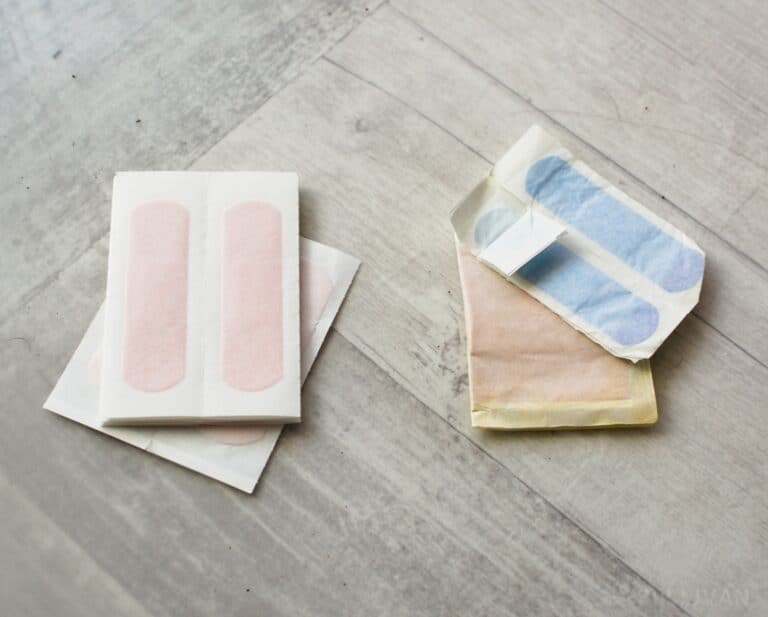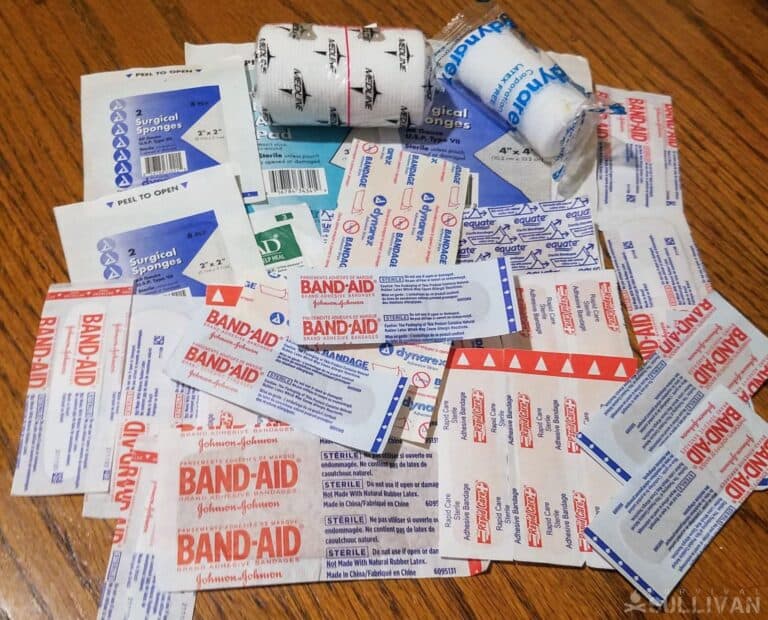Any prepper with even a modicum of first-aid training will pay close attention to the status and shelf life of the items in his first-aid kit. These things wear out over time. Ointments lose their potency, medications go stale or expire, and antibiotics can spoil. But what about the other, more mundane supplies in the kit? What about bandages?

Do the bandages ever expire?
No, bandages don’t expire, but they do degrade over time. Simple gauze or wrap bandages might lose their sterility over time, and will definitely be vulnerable to aging via mold and general decay.
Bandages with adhesive components are vulnerable to aging due to adhesive breakdown and other factors. Specialized bandages with impregnated medicines or blood-clotting agents can expire as usual, however.
So why you might say that most bandages don’t technically expire, they can go bad over time, especially when they have been neglected or left in bad conditions. There is a surprising number of factors to consider, and in the rest of this article we will be going through them.
Time Corrodes Everything
The first thing you should understand about the bandages in your first-aid kit is that they will not endure. Not forever.
Being made of simple woven fibers (or a fiber pad affixed to an adhesive strap or backing) the simple passage of time will eventually degrade the performance of any bandage.
Over time, the bandages in your first-aid kit will be subjected to hot and cold, humidity and extreme dryness, and countless bumps, jostles, and other impacts that result in friction forces being imparted to the bandage itself.
All of these things will however slowly wear your bandages out without ever taking them out of the package.
Weather / Environmental Factors
As you probably already guessed, ambient conditions and weather will also play a big part in how long your bandages will remain a viable tool in your life saving first-aid kit.
If the bandages in your kit are exposed to extreme temperature spikes, let us say, for instance, due to being kept in a car sitting in a parking lot in the middle of summer, it is highly likely they will begin to break down, especially if they have any adhesive components.
Cold weather too is also a problem, especially in conjunction with any moisture infiltration. Freezing temperatures make bandages difficult to handle, inflexible and brittle, greatly stressing the fabrics.
Depending on the quality and specific make of an adhesive bandage, that adhesive might not react well to extremely cold temperatures, losing its stickiness entirely or behaving erratically when you need it.
Moisture is the perennial enemy of all kinds of soft gear, bandages included. If the bandages in your first-aid kit get drenched from precipitation, immersion in water, or just from perspiration off your body (in the case of an on body EDC kit), it is likely that the adhesive and fabric components both will be negatively affected, and sterility may be compromised.
Also, anytime the interior of your first-aid kit is contaminated by dust, dirt, or other debris this has the potential to abrade and subsequently degrade or even compromise the packaging of your bandages, if they are packed, and thus shorten their lifespan.
Warning Signs of Low or No Bandage “Life”
The vast majority of bandages do not have any kind of printed expiration date, with the exceptions being certain ones with an adhesive component or perhaps impregnated antibiotic or hemostatic agents.
This is because manufacturers are not required to set or advise of any expiry date for bandages in most cases.
If your bandages have any kind of impregnated pharmaceutical component, you can generally depend on this expiration date.
Likewise, if they have an adhesive component the expiration date is generally reliable, more or less, for telling you when the adhesive is likely to give up the ghost whether or not it is used.
It is better instead to learn the more obvious signs and symptoms of either old bandages or bandages that have potentially been compromised. We have listed the most obvious offenders below.
- Stiff or spongy feel. Bandages that don’t feel soft and supple are usually old enough to begin suffering from dry rot. Alternatively, they might have been immersed or thoroughly soaked. In any case, ditch them.
- Obviously damaged or discolored packaging. If the package or wrapper containing your bandages appears obviously damaged, you can no longer be sure of its sterility. Throw them out or use them as trainers at best. Likewise, any kind of packaging and especially paper packaging that looks to be an ivory or yellow color is probably so old it has started to degrade.
- Mold or other infestation. You don’t need me to tell you that this is a bad, bad sign for your bandages. Throw it out, and ruthlessly inspect the other ones for the same signs.
- Strange adhesion characteristics. Any bandage with an adhesive component or bandages that are designed to cling to itself should feel normal. If an adhesive bandage feels more tar- or sap-like than just sticky, or if a self-adhering bandage or cling wrap doesn’t cling the way it should or only in certain places there are probably too old. Time to toss them.
- Unknown provenance. Any bandage that you cannot reliably identify, or any bandage that you cannot sincerely remember when and where you got it has probably been loitering in your kit too long for its own good. Bandages of all kinds are comparatively cheap, but failed medical interventions are monumentally expensive. Toss these hang-arounds and get new bandages, pronto.

Tips for Keeping Your Bandages Tip-Top
No matter what kind of bandages you are using and no matter what role you employ your first-aid kit in there are a few simple guidelines that will keep your bandages fresh, usable and viable for many years. Check them out below, and your first-aid kit will thank you:
- Date your supplies. By doing nothing more than keeping a small log book or even a scrap of paper tucked away inside the kit with the purchase date of the various given supplies you can avoid that head scratching question that asks how long you have been hanging on to a given set of bandages. This way you’ll know when they are too old for comfort and when to replace them.
- Use a quality container or pouch. A first-aid kit that is properly organized and secured with individual spaces or subcompartments for all its contents will ensure that those contents last longer than a generic bag that has a mishmash of everything rolling around and mixing inside. A proper kit or box will prevent damage to the contents, and also prevent environmental intrusion to a degree.
- Don’t remove bandages from packaging. Unless you have purchased a bulk box which can be discarded from the individual bandages don’t remove your bandages from their individual wrappers or packages without a damn good reason. Not only will you compromise their sterility, but you will drastically accelerate wear and degradation on the bandage.
- Store your kit with care. Don’t mistreat your first-aid kid by throwing it around like a bag of body parts. It should be placed among other gear, in your home or in your vehicle with care, and then treated accordingly so it’s not damaged.
- Keep it clean! If the exterior or interior of your first-aid kit gets dirty, clean it properly, taking care to not get water or other chemicals on any of the components. If the interior of the kit is splashed with something that is difficult to remove or biohazardous, you’ll need to bite the bullet and replace the container or pouch itself. Letting difficult-to-remove and persistent agents loiter on your gear will only accelerate the contents of the kit biting the dust.
Conclusion
Most bandages do not expire, per se, but they do degrade and wear out over time with a notable exception being any bandage that has impregnated topical medicines or blood clotting agents.
Other, more conventional bandages and especially those with adhesive will wear out over time, losing their suppleness, stickiness and potentially even their sterility. Bandages that are too old or suspect due to age should be thrown out and replaced.

Tom Marlowe practically grew up with a gun in his hand, and has held all kinds of jobs in the gun industry: range safety, sales, instruction and consulting, Tom has the experience to help civilian shooters figure out what will work best for them.
